This year will mark the bi-centenary of the birth of Arctic explorer and collector Dr John Rae, who was born on 30 September 1813. The John Rae 200 celebrations, organised by the Orkney Natural History Society, include an international conference, community events and an exhibition in Stromness Museum.
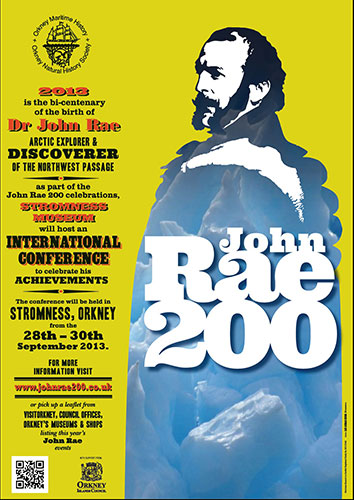
This exhibition was created in partnership with National Museums Scotland and contains important objects from both collections, focusing on John Rae’s relationship with the indigenous communities he encountered on his journeys.
Born and raised in Orkney, Rae learned how to live on the land and survive as part of a remote community. His legendary physical fitness as well as his love and knowledge of the land undoubtedly contributed to his success as an explorer. This exhibition focuses on his early career in the 1840s-50s, when he was largely engaged with the Hudson Bay Company and in searches to discover the fate of the Franklin Expedition.
Objects on display include Cree/Metis, Arctic and Northwest Coast material collected by John Rae alongside material collected by others to contextualise Rae’s collection and give a fuller sense of the peoples he encountered.


The team at National Museums Scotland, including loans, conservation and curatorial staff, worked closely with the Orkney Natural History Society to arrange the exhibition.
After months of hard work the exhibition opening loomed and a date was set for installation. As intrepid explorers ourselves, Conservator Charles Stable and I set off northwards one frosty Sunday morning, with over six hours of driving ahead of us. The collections were securely packed into crates by our conservation team, using layers of plastazote and tyvek cushions. With the long drive as well as the notoriously turbulent ferry crossing ahead, it was especially important that the objects were well packed.
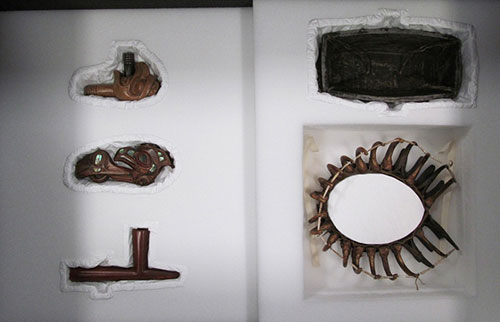
We made good time on the way up, feeling fortunate that the difficult conditions caused by snow a few days earlier had cleared. Thankfully the ferry crossing was almost smooth, getting us into Stromness on time at 8pm. Stromness Museum was only a short drive away, through the narrow winding streets (thank goodness we didn’t meet a car coming in the other direction), where we were greeted by Honorary Curator Janette Park, husband John (the local butcher, who kindly agreed to help us lift crates!) and Technical Manager Bart.
The morning revealed the spectacular views from our accommodation over to the island of Hoy and along the coast up the Mainland. Stromness Museum was only a ten minute walk away and with such fantastic scenery one of the nicest commutes I have ever had.

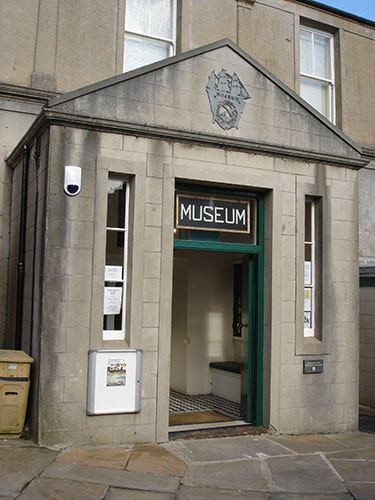
At Stromness Museum, Exhibition Curator Tom Muir and committee member Bryce Wilson were on hand to help with installation. With around 30 objects to install we hoped to be finished in one day.
Each object was unpacked and checked against a condition report written by our conservation team. This is done to make sure that nothing was damaged in transit, and also gives us a reference point to ensure that any change to an object’s condition while on display can be identified. After each object was checked it was placed in position under Tom’s direction.
As with all the best laid plans, we inevitably had to make a few changes on the day. After putting our heads together and doing a bit of re-arranging we managed to fit everything in. A few last minute (and very creative) mounting solutions helped to really show the objects off.

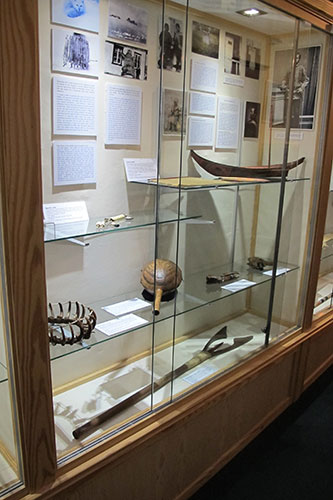



On Tuesday we moved the empty crates into storage. Janette Park gave Charles and me a tour of Stromness Museum which surveyed its wonderful natural history, maritime and ethnographic collections. This also left some time for some sightseeing. The Orkney Islands are rich with sites of archaeological and historical significance, so one afternoon was definitely not enough!
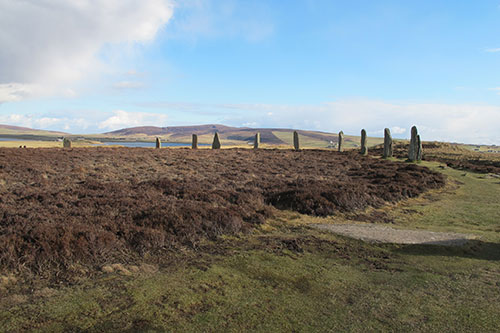
We also had time to visit the memorial to John Rae in St Magnus Cathedral, Kirkwall. This memorial is prominently positioned within the cathedral, sitting opposite a memorial to William Balfour Baikie, a fellow Orcadian and explorer.

It is a touching tribute to an individual whose achievements were not fully recognised during his lifetime. It is hoped that 2013 will be a moment in which to re-evaluate the legacy of John Rae, his role in Arctic collecting as well as his historical significance in Arctic exploration.
To find out more about Rae’s bi-centenary,visit the John Rae 200 website. You can also download a pdf file detailing the bi-centenary events.
